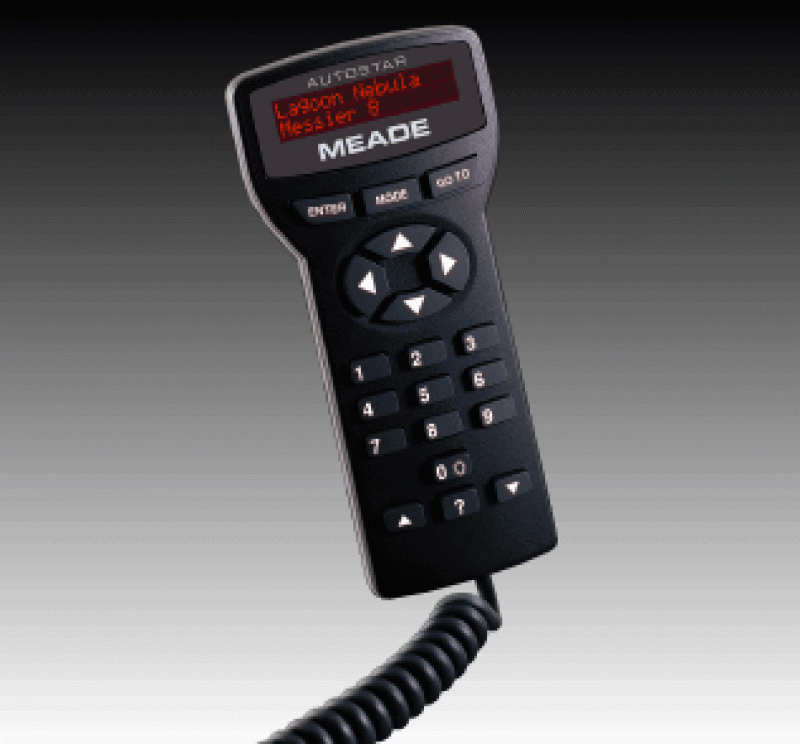 |
|
Is it time to get on track? GOTO gets you there. This is an example of a 3-min. exposure by an amateur astronomer/photographer, Swimswithtrout, timed and tracked. Note the blurry trees. From the forum dpPreview.com. |
Astronomy is gadget land. Yay! And at he top of list of astronomy gadgets are computerized GOTO telescopes. What’s GOTO?
The stars and planets in the night sky are predictable, and what you see depends on where on the globe you are observing from and the time and date. In the same way that mobile astronomy apps can show you a sky map as you point your device skyward, many modern telescopes such as Celestron and Meade contain computers and motors that permit these scopes to find and follow objects in the sky. The common term for those smart telescopes is "GOTO."
 |
|
The Meade AutoStar III hand controller for LightSwitch features an object library of over 100,000 objects. |
Nearly all models have a handheld control pad with buttons for moving the telescope and for selecting objects, and most also feature an illuminated readout to tell you where the telescope is pointed and give you object information.
GOTO telescopes offer several attractive benefits. After being calibrated for your sky (more on this later), they can locate objects that are difficult, if not impossible, to spot with the naked eye.
A GOTO telescope can help you learn the sky, too. Using a simple star chart or your astronomy app as a starting reference, you can use your telescope to observe all the major stars and deep-sky objects (nebulas, star clusters, galaxies, etc.) in a given constellation.
Finally, a GOTO telescope is essential if you wish to capture images of objects, either afocally with your smartphone, or by mounting a DSLR camera to the telescope.
Strictly speaking, it's the mount (consisting of the tripod, motors and electronics, and mounting brackets for the telescope's tube) that does the pointing and tracking. This is an important distinction: While many telescopes are sold as one tube/tripod unit, serious amateur astronomers often purchase the mount and telescope separately, allowing users to pick models that specialize in each device. This also allows them to upgrade one component or another as their interests evolve.
The price for GOTO telescopes and mounts varies with the build quality (i.e., metal instead of plastic), the accuracy of the motors and the size of the onboard object database. The databases of low-end consumer models, which have lightweight and somewhat wobbly mounts, commonly contain a few thousand objects, divided among solar system objects (including major asteroids), prominent stars and the brighter deep-sky objects. While those telescopes work, most astronomers will suggest investing in something more substantial. At some point, the frustration of taking the trouble to find an object, only to have a gust of wind shake the telescope or someone's foot catch a tripod leg, means your little telescope will sit unused in the closet.
The better models are heavier and have databases containing tens of thousands of dimmer stars and galaxies. These models also usually allow for connection to a PC, so you can operate the telescope remotely using a sky-charting program and update the telescope with the latest comets and new discoveries, such as stars with exoplanets.
Most of the top telescope vendors, such as Celestron, Meade and Orion, make entry-level and high-end all-in-one models as well as stand-alone mounts. Popular vendors that specialize in telescope mounts include Skywatcher and iOptron.
 |
|
It’s the mount that does all the work in computerized GOTO tracking. This is the Celestron GOTO ready CGE Pro Mount. |
Read more: space.com